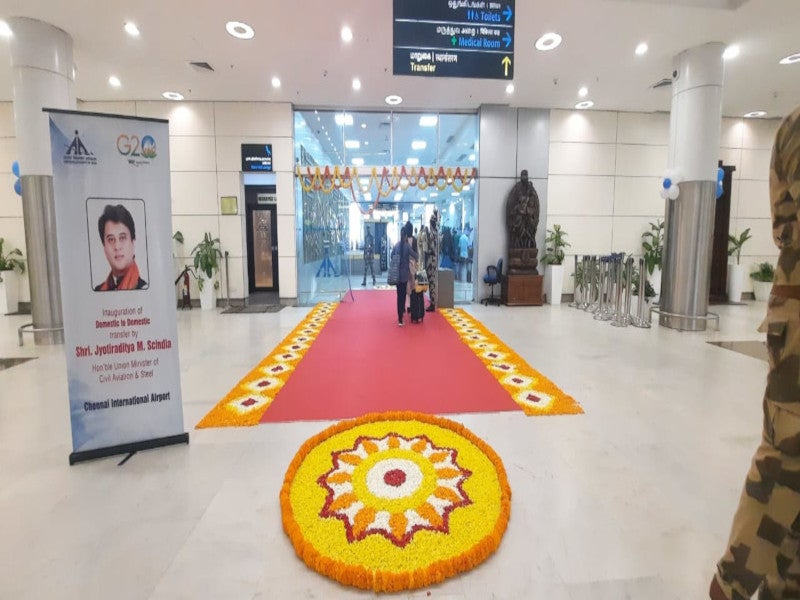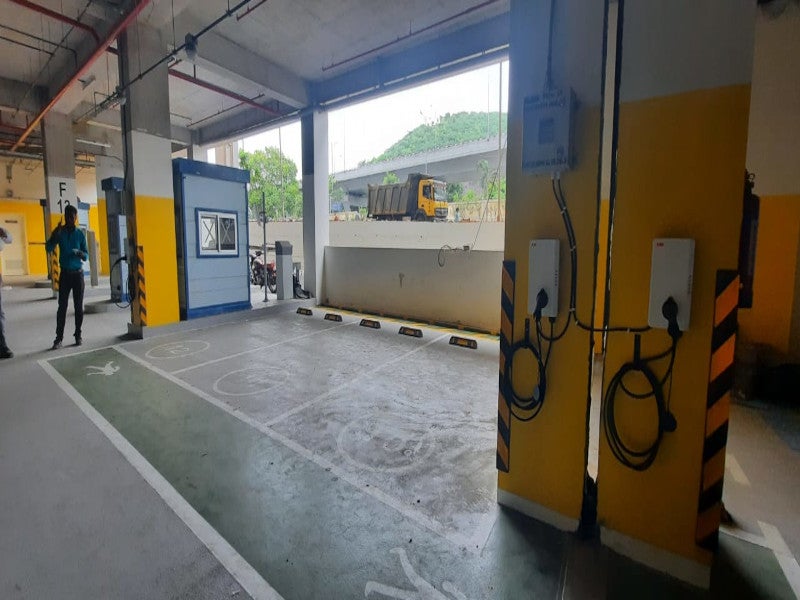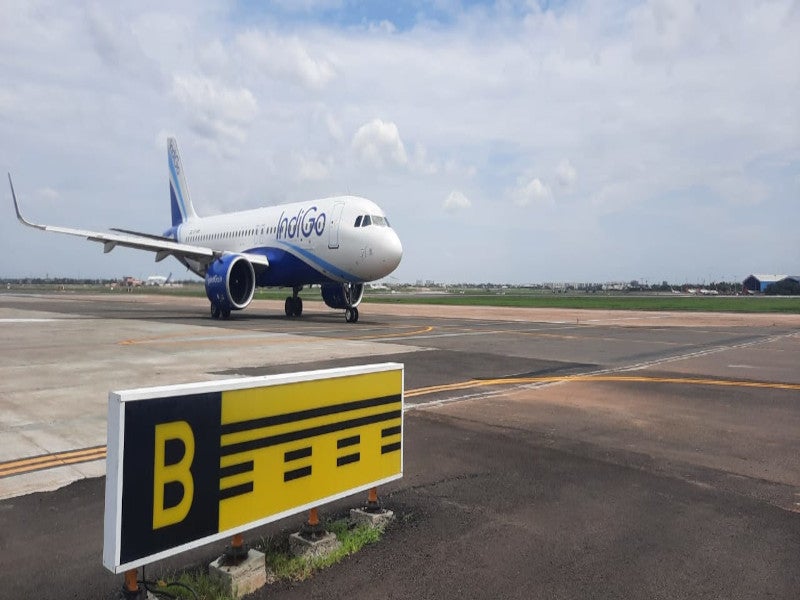Chennai International Airport (formerly known as Madras International Airport) is located in Tirusulam, a suburb 7km south of Chennai, Tamil Nadu, India.
The airport is owned by the Government of India and operated by the Airports Authority of India (AAI). It is India’s third-largest airport in terms of international passenger traffic volume.
The terminal complex includes both an international and a domestic terminal, which are adjacent to each other.
In April 2023, phase one of a new integrated terminal building (NITB-T2) was inaugurated. The NITB at Chennai Airport is being developed in two phases with an estimated investment of Rs24.67bn ($528.71m).
Phase one will increase the airport’s annual passenger capacity from 23 to 30 million while phase two will increase the capacity to 35 million. Phase two of the NITB-T2 is expected to be completed by July 2025.
Chennai International Airport expansion timeline
In July 2008, the Public Investment Board (PIB) approved the development plans at the airport. AAI funded 80% of the project and 20% came through commercial borrowings.
Work began in October 2008, and construction of the international terminal was completed in July 2011. Although the expansion was initially planned to be completed by the second half of 2011, it was later postponed to early 2013. The sustainable technology used in the expansion transformed the airport into the greenest in India.
Chennai Airport expansion details
The project included a new domestic terminal, the modernisation of the existing domestic terminal, and the expansion of the international terminal.
The new domestic terminal and the expanded international terminal increased the area to 142,700m² (1.5 million square feet), enabling the movement of more than 23 million passengers annually. The terminals are connected by a 1km flyover and feature two moving walkways.
After the upgrade, there are four aerobridges for international passengers and six for domestic passengers.
The 15,700m² Anna international terminal was expanded by 59,300m² to increase its passenger handling capacity by an additional four million passengers annually.
The upgraded international terminal can accommodate approximately 4,450 passengers during peak hours. It features eight aerobridges and eight conveyor belts.
The 13,000m² Kamaraj domestic terminal can handle six million passengers annually. A new 67,700m² domestic terminal was constructed, increasing capacity to ten million passengers per year. The overall capacity of the domestic terminals capacity has been augmented to 16 million passengers annually.
The development also included the construction of a parallel runway interconnected by a taxiway, aprons, two multi-level car parking garages, each with 1,200 spaces, and improvements to roadway access and infrastructure.
Integrated cargo complex at Chennai Airport
Chennai Airport has an integrated cargo complex with a ground floor space of 21,000m² and a first-floor area of 12,100m². An automatic storage and retrieval system has also been installed at the complex.
Terminal features at Chennai International Airport
The international and domestic terminals are connected by a building that houses administrative offices and a restaurant.
The terminals feature basic passenger amenities, including a health scan facility at the domestic terminal, auto vending machines for snacks and magazines, dormitory accommodation and retiring rooms facilities. Additionally, there is a communication centre for web browsing and video and phone conferencing.
Special assistance is also provided, including lounges, reserved parking areas for physically handicapped passengers, and an infant lobby. The existing international terminal is equipped with two aerobridges while the domestic terminal has three.
Multi-level car parking facility
In February 2023, a new multi-level car parking (MLCP) became operational. The MLCP boasts multimodal connectivity, the first of its kind in India, with an extensive road and rail network, and exclusive direct access to the metro train.
The six-storey MLCP, with a total built-up area of 250,000ft², is built on the existing airport parking lot, flanked by the airport metro station, with East and West MLCPs on either side.
The facility, which can comfortably handle 2,150 vehicles, can relieve congestion in the terminal’s arrival and pick-up areas. The East MLCP has more than 750 parking spaces while the West has more than 1,400 spaces and also includes two wheelers parking.
It features automated parking spaces, EV charging stations, and a variety of commercial amenities, such as a five-screen multiplex, food courts, retail stores, a kid’s play zone, and restaurants for the benefit of passengers and the general public.
Runways at Chennai International Airport
The airport has two runways – 07/25, which is 3,658m (asphalt) and 12/30, which is 2,045m (asphalt/concrete). The Tamil Nadu State Government allocated 130 acres of land for the development of a second runway.
The construction of the secondary runway began in May 2009. It was built over the Adyar River using a bridge that includes a taxiway. The project was completed in 2011.
Bravo taxiway (B-TWY) at Chennai Airport was completed in July 2022. It serves as the primary taxiway and runs parallel to the primary runway (07/25).
Road and railway infrastructure
Chennai International Airport is well connected by state-run bus services and taxis. Additionally, there is a special bus service to and from the airport.
The government is also working on constructing an elevated express highway from Maduravoyal to Chennai Port.
Furthermore, the Chennai Metro rail project connects the airport with various parts of the city.
Contractors involved
The AAI selected a team of architects for the expansion plan through an international design competition held in June 2007. The team consists of US-based architecture and design company Frederic Schwartz Architects, Hargreaves Associates, Gensler and New Delhi-based Creative Group.
In October 2008, the AAI awarded an Rs12.1bn ($249.9m) airport expansion contract to a joint venture of Consolidated Construction Consortium (CCCL) and Canadian infrastructure company Herve Pomerleau International.
CCCL includes construction companies Punj Lloyd, Larsen & Toubro (L&T) and Nagarjuna Constructions. CCCL was also involved in the construction of the cargo complex.
In October 2009, electric utility company Areva’s transmission and distribution division (T&D) was awarded an Rs556m ($11.54m) power distribution and gas-insulated substation system’s supply and installation package.
BSCPL Infrastructure, an India-based infrastructure development company, was contracted for the bay expansion in the south, including three aerobridges for air traffic operations.
Chennai International Airport history
The airport served Air India flights from Mumbai during the 1950s.
The airport’s first passenger terminal was built in Meenambakkam, which now functions as a major cargo base.
In 1988, a new terminal complex was constructed in Tirusulam, adjacent to Meenambakkam.
In 2001, Chennai Airport became the first international airport in the country to receive ISO-9001-2000 certification.







